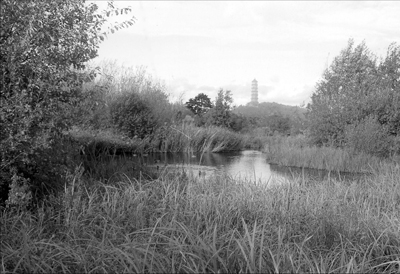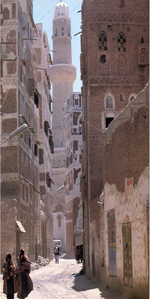You are in: Home page > Magazine > Morphological growth of the historical city
Morphological growth of the historical city

Marco Maretto

Polarities (territory)
A city can be considered unified in its conception, yet infinitely plural in its phenomenic manifestations. Its histories and identities are continuous with the territorial interpretations carried out by different civilisations. The traces of these histories and identities constitute the latent substrata of every urban enterprise. They tell us of the societies which traced them, of their settlement culture and their territory. Traces, true, yet laden with semantic value and hence a fascinating vehicle for understanding the anthropic landscape. Fascinating, because they are devoid of formal conditioning, but on the contrary, point to the “structural” substance of places and societies; because they are attentive to the logic of formation and transformation of a territory, rather than to its historiography; because, if we know how to read and interpret them, they translate into a conscious basis for contemporary urban design. Morphology, as the study of the semantic form of an urban fabric, is the discipline concerned with the interpretation of these traces. Concepts like “urban polarity”, “urban fabric“ and “neighbourhood building-unit” embody infact the highest level of interpretation of environmental factors and social needs, thus drawing the latent grid through which urban phenomena have taken place over history. Muratorian theory recognizes basically two kinds of urban polarities: ‘inner’ ones, with civil characteristics and ‘external’ ones, with specialist characteristics.[i] To both of them we owe the co-ordination of urban fabrics. In the case of the external ones, however, their role as functional exchange between the town and its territory is also important: they occupied and fixed the urban ‘boundary’ at a particular time as a fundamental place of contact between town and country. As the town grew and reorganized, they became inner civil polarities (landmarks) and a new ‘boundary’ and a new fringe belt were created farther out[ii]. We could say that the latent basis of urban form evolution lies in the dialectic between inner and external (civil and specialist) polarities. But there is one more element of great importance: the existing connection between different polarities and urban fabric. Urban fabric is, first of all, the expression of a given society and of a given urban culture. It is the urban fabric that gives significance and defines urban polarities as important historical and civil landmarks finding them place within the the urban territory. In other words, it is the urban fabric that suggests, if we are able to read it, what to build (and where). But urban fabric is also entrusted with the fundamental task of defining urban and public space. A common space that is, at the same time physical and social. It is no coincidence that the crisis of modern society and the urban city coincided with the progressive disruption of public space, which is precisely the veritable mirror of society. A square, a street or a courtyard, are all expressions of urban and social space and that fundamental concept that is the building- neighbourhood. This latter represents the intermediate space between the “family” and the “civitas”, between the “house” and the big “urban polarity”.[iii] It is a built organism whose significance increased with the growth of the town: from the Dutch hofjes to the medieval beguinages, from the Venetian calle-courtyards to the English squares, and so on.
Morphology can then identify, in our opinion, the “structural nexus” on which the concrete existence of a city is founded in its gradual temporal development. An extremely important nexus, because it combines analysis with synthesis, interpretation with design; because the “real” whole of the structures of a city is the bearer, over time, of as many social, economic and cultural structures; because understanding its formative logic means participating in a dynamic process of transformation, means planning its future in the “structural” consciousness of its past. Thus the different types of urban fabric become the result of as many different types of economic, social, cultural and political fabric, which find in the former their concreteness and form. A semantic form, from the study of which we can “read” and “write” the history of a city on all its scales. Clearly the concept of “compact city” is then at the basis of the this methodology. A flexible and dynamic city that finds in its formation and transformation mechanisms, in its morphology, the capability to adapt to the rapid changes of contemporary society, without losing the thread of its history: “the incomprehension of present – Marc Bloch wrote – fatally originates from the ignorance of past, but it is useless to try to understand the past if we know nothing of the present”[iv].
[i] See Maretto, M. (2009) “Fringe-belt theory and polarities-landmarks theory” in Urban Morphology vol.13 n°1.
[ii] In general it is the polarities that set in order and hierarchize urban fabrics, while the landmarks define their ‘architectonic presence’ in the town. See Maretto, M. (2008) op. cit.
[iii] The house represents usually the architectonic evidence of the family, while the civitas finds its architectonic identification in the urban polarities-landmarks.
[iv] Bloch, M. (1949) “Apologie pour l’Histoire ou métier d’historien” in Cahier des Annales n°3, Librairie Armand Colin, Paris. (trans. by the author).

Polarities (urban)














